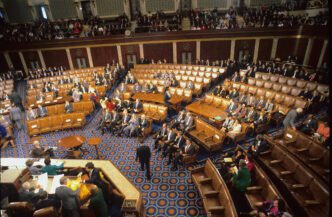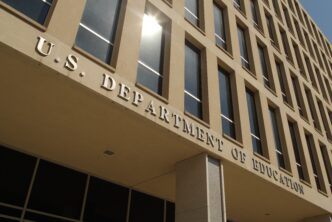Executive Summary
- California Democrats have unveiled a proposed congressional map aiming to secure up to five new House seats for the party, directly responding to President Trump’s call for Texas to redraw its districts.
- Governor Gavin Newsom plans to call a special election to adopt the new congressional districts, a move that bypasses the state’s independent redistricting commission and has drawn significant criticism for politicizing the process.
- The proposed plan targets five Republican representatives and includes a trigger clause, taking effect only if a Republican-led state advances its own mid-cycle redistricting, highlighting a broader national trend of partisan maneuvering over electoral maps.
The Story So Far
- The proposed mid-cycle redistricting in California is a direct response to President Donald Trump’s urging for Texas to redraw its districts to favor Republicans, leading California Democrats to “fight fire with fire.”
- Redistricting typically occurs once a decade following the U.S. Census, making this mid-cycle effort unusual and part of a broader national trend where both major parties are seeking to leverage district boundaries for political advantage.
- The proposed plan bypasses California’s independent redistricting commission, which was established by voters to remove partisan influence from the process, drawing criticism from Republicans and good-government advocates.
Why This Matters
- This proposal could significantly shift the balance of power in the House of Representatives by potentially securing up to five new seats for Democrats, influencing the 2026 midterm elections.
- The move by California Democrats to engage in mid-cycle redistricting, in response to President Donald Trump’s urging for Texas to do the same, signals an escalation of partisan gerrymandering tactics across the nation.
- Governor Newsom’s plan to bypass California’s independent redistricting commission could undermine the integrity of non-partisan redistricting processes, setting a precedent for other states to prioritize political gain over independent oversight.
Who Thinks What?
- California Democrats, including the DCCC and Governor Gavin Newsom, support the proposed mid-cycle redistricting as a necessary countermeasure to Republican efforts in other states, aiming to “fight fire with fire” and prevent Republicans from “rigging the election” while potentially securing new House seats for their party.
- California Republican representatives and leaders, such as Doug LaMalfa, Kevin Kiley, and James Gallagher, strongly oppose the proposed changes, calling them “naked politics at its worst” and a “rigged scheme” designed to dismantle the independent commission and give Democrats more power through a process lacking transparency and public input.
- Good-government advocates and some former members of the independent redistricting commission, like Jeanne Raya, oppose the governor’s proposal, arguing that bypassing the independent commission politicizes the redistricting process, lacks transparency, and undermines the will of California voters who established the commission to remove partisan influence.
California Democrats have unveiled a proposed congressional map that could significantly reshape the state’s political landscape and potentially secure up to five new seats for the party in the House of Representatives. The proposal, submitted by the Democratic Congressional Campaign Committee (DCCC), comes as a direct response to President Donald Trump’s urging for Texas to redraw its districts to favor Republicans, prompting California’s Democrats to “fight fire with fire” through a mid-cycle redistricting effort.
The Proposed Map and Its Rationale
The DCCC submitted the proposed congressional map to the legislative public portal, stating it had “collaborative input from stakeholders and legislators.” Julie Merz, the executive director of the Democratic Congressional Campaign Committee, said the proposal is anticipated to have “widespread support” among California office holders and various stakeholders.
Merz further stated that Democrats “will not stand by as Republicans attempt to rig the election in their favor and choose their voters.” She argued that Republicans are trying to protect a “narrow majority” because they cannot win on a “disastrous legislative record.”
Mid-Cycle Redistricting Context
Redistricting typically occurs once a decade following the U.S. Census to adjust political boundaries based on population shifts. However, this current push for mid-cycle redistricting in California is a direct reaction to President Trump’s call for Texas to send “five more Republicans” to Congress.
California Democrats, including Governor Gavin Newsom, frame their action as a necessary countermeasure, aiming to gain new districts that could benefit their party. This move holds the potential to influence the 2026 midterm elections, where Democrats hope to regain control of both the House and Senate.
Targeted Republican Seats
The proposed California redistricting plan specifically targets five Republican representatives. These include Doug LaMalfa (District 1), Kevin Kiley (District 3), David Valadao (District 22), Ken Calvert (District 41), and Darrell Issa (District 48).
Under the proposed changes, LaMalfa’s rural district would reportedly lose many Republican voters and extend westward into more Democratic coastal areas. Likewise, Kiley’s redrawn district would incorporate Democratic-leaning Sacramento County while removing much of the Eastern Sierra region.
Republican Opposition
Republican representatives have swiftly criticized the proposed changes. Representative LaMalfa stated on X that the maps exemplify “naked politics at its worst,” questioning how Modoc County could share common interests with Marin County and the Golden Gate Bridge.
Representative Kiley affirmed his intention to win re-election regardless of the proposed changes, expressing confidence that his district would remain as is. Kiley, who has previously introduced legislation to block mid-decade redistricting, stated, “We will defeat Newsom’s sham initiative and vindicate the will of California voters.” Meanwhile, Democratic Representative Ami Bera is reportedly considering options to continue representing Sacramento, potentially by running in the redrawn District 3.
Governor Newsom’s Role and Controversial Mechanism
Governor Gavin Newsom has announced plans to call a special election on November 4, allowing Californians to vote on adopting the new congressional districts. This approach would bypass the state’s independent redistricting commission, which was established by voters to remove partisan influence from the process.
Newsom indicated that the proposal includes a trigger clause, meaning it would only take effect if Texas or another Republican-led state advances its own mid-cycle redistricting plan. He defended the transparency of his plan, arguing that voters would have the final say, unlike the proposed Texas plan.
Criticism of the Democratic Plan
The proposed plan has drawn strong criticism from Republicans and some good-government advocates. California Assembly Republican Leader James Gallagher called the maps “rigged” and accused Democrats of drawing them “in secret to give Democrat politicians more power by dismantling the independent commission Californians created.”
Gallagher asserted that the plan discards years of public input, describing it as a “rigged scheme cooked up behind closed doors.” He criticized the rush to meet a deadline, the cost of a November special election for taxpayers, and the perceived lack of public input, calling it “a mockery of democracy.”
Even some Democrats have voiced concerns. Jeanne Raya, a former Democratic member of the independent commission, expressed worry about transparency, stating that voters would suffer from the lack of openness inherent in the commission’s work. Several good-government groups also oppose the governor’s proposal, arguing it politicizes redistricting and undermines the independent commission’s role.
Broader National Implications
The redistricting efforts in California are part of a broader national landscape where both Democratic and Republican-led states are weighing or pursuing changes to electoral maps. While states like New York and Illinois are reportedly considering new redistricting efforts, they face legal obstacles or limited opportunities to gain seats.
Conversely, Republican strongholds such as Ohio, Indiana, Florida, and Missouri are seen as having greater potential to expand their representation through similar redistricting maneuvers.
The proposed redistricting in California highlights a growing national trend of partisan maneuvering over electoral maps, with both major parties seeking to leverage district boundaries to their advantage. As the debate continues, the outcome in California, and potentially other states, could significantly influence the balance of power in future congressional elections.








